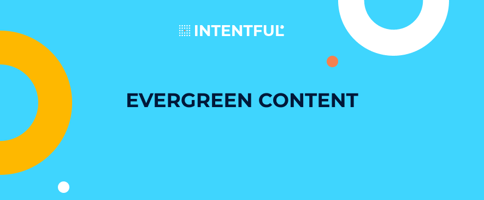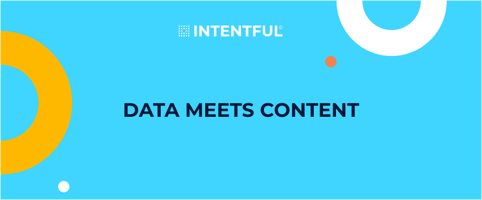In the constantly changing world of content marketing, one thing has consistently proven its worth....
How to Repurpose Old Content for New Channels
In the dynamic digital marketing landscape, there's constant pressure to stay ahead of the curve with fresh, engaging content that resonates with audiences. And we often overlook the hidden potential of what we already have. Repurposing old texts, videos, and podcasts breathes new life into existing work, saves valuable time and resources, and expands one’s reach to a broader audience.
This article is a brief playbook on repurposing. So, let's embark on an insightful journey to master this useful art.
Assess Existing Content
When making the most out of what you already have, the first step is to assess it and identify the pieces that can be effectively repurposed. Here is how to do that.
- Review what you have, including blog posts, videos, podcasts, webinars, and more. Create a list of the topics covered and the formats used for each piece.
- Identify evergreen pieces which remain relevant and valuable over time. They’re ideal candidates for repurposing. Look for that which is still accurate, helpful, and applicable to your audience's needs.
- Analyze performance to determine which pieces have performed well in terms of engagement, traffic, and conversions. High-performing material is more likely to continue resonating with people after it’s been repurposed.
When selecting what is best to repurpose for each channel, consider your audience's preferences and the target platform's characteristics. For instance, infographics and videos may perform better on social media, while in-depth blog posts might be more suitable for an email newsletter or a guest post on a relevant website.
By carefully assessing what you already have and adapting it to fit the needs of each channel, you can unlock its full potential and maximize its reach and impact across multiple platforms.
Determine Your Target Channels
It's also important to consider which new channels to focus on to reach and engage with new audiences. Here are some steps to help you determine that.
- Identify your target audience and which channels they are likely to use. For example, if you want to address Gen Z primarily, you should focus on social networks like TikTok or Instagram. LinkedIn may be a better fit if your demographic is primarily professionals.
- Conduct market research, and look at what your competitors are doing and where they are active. This can give you insight into which channels are most effective for your industry.
- Consider which content type better fits the chosen channels. For example, infographics or videos may perform well on social media like Instagram or Pinterest, while LinkedIn or Medium better suit longer-form texts like blog posts.
- Evaluate your resources: Consider the resources you have available, such as time, budget, and expertise. Some platforms may require more resources, so choosing those that align with what you can realistically manage is essential. Consider artificial intelligence content creation to save time and money.
Here are some popular channels for repurposing:
- Social media: Facebook, Instagram, Twitter, LinkedIn, TikTok, Pinterest, etc.
- Video platforms: YouTube, Vimeo, etc.
- Podcast services: Apple Podcasts, Spotify, Google Podcasts, etc.
- Slide sharing media: SlideShare, Speaker Deck, etc.
- Email newsletters: Mailchimp, Campaign Monitor, etc.
Once you have identified the channels you want to focus on, it's essential to research them to understand their audience and requirements for repurposing. For each channel, look at what performs well, the best times to post, and any technical requirements for repurposing. This will help you tailor your material and maximize its impact.
Repurpose Your Content for Each Channel
Now that you've assessed what you have and determined which channels to focus on, get down to actual repurposing. Here are some tips to help you get started:
- Social media: Use images or videos to highlight key points from your blog post or podcast. Create short, snappy captions and use relevant hashtags to increase visibility.
- Email newsletters: Utilize blog posts for your newsletter, or create a summary of your podcast episode. Include links to the full pieces on your website or other platforms. Add a call-to-action to encourage subscribers to engage with your brand.
- Blog: Repurpose your podcast episode or video into a blog post. Use images, infographics, or charts to break up the text and make it more visually appealing. Link to other relevant info on your website or other platforms.
- YouTube: Use your blog post or podcast as inspiration for a video. Create a visual representation of them or a tutorial that expands on the key points. Use relevant tags, descriptions, and titles to optimize your video for search.
Measure Your Results
When the repurposed content is out there for everyone to see, it’s crucial to understand how well it's performing and how to increase its efficiency in the future. Here are some relevant KPIs for content marketing to track:
- Social media: Engagement (likes, comments, shares), reach, click-through rate (CTR), and follower growth.
- Email newsletters: Open rate, CTR, conversion rate, unsubscribe rate.
- Blog: Page views, time on page, bounce rate, scroll depth.
- YouTube: Watch time, views, likes, comments, and subscriber growth.
Read our blog post to learn more about the KPIs.
Once you have the data, do the following:
- Analyze it to see what's working and what's not. Identify patterns and trends to help guide your marketing.
- Adjust your strategy — for instance, create more content that resonates with your audience or optimize it for specific channels.
- Experiment based on data with new formats or platforms. Try new things and see what works best.
By measuring your results and using the data to improve your future repurposed content, you can continue to grow your audience and increase engagement over time.
To make the steps described above even more efficient, Intentful can be your go-to partner in this journey, helping you create any type of text for various channels. You can choose turnkey content delivery or a dedicated generative AI instance to work with independently (with our guidance and support). Additionally, our search chatbots can help increase brand engagement.
Contact us today to explore how our AI-driven solutions can boost your content marketing.


